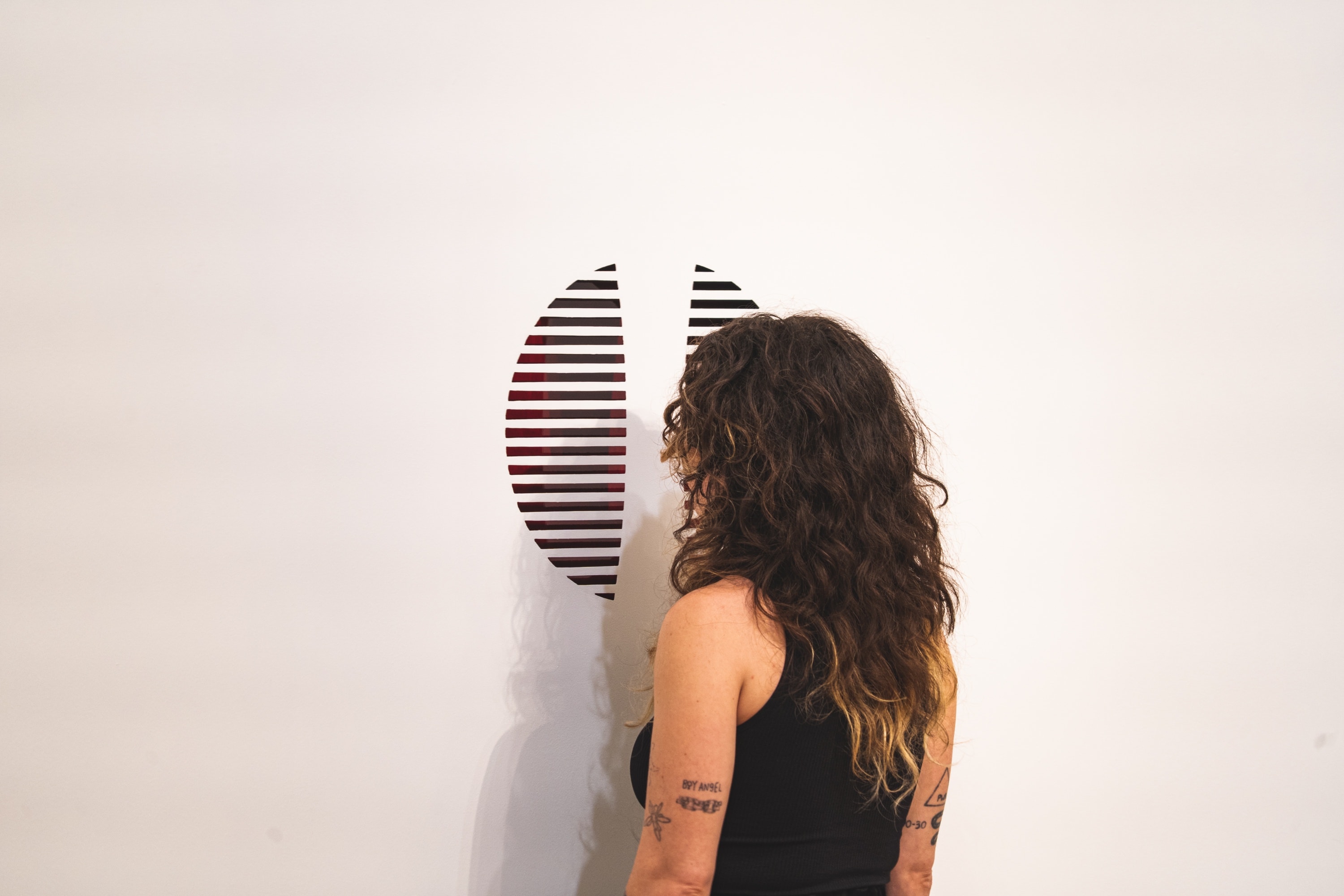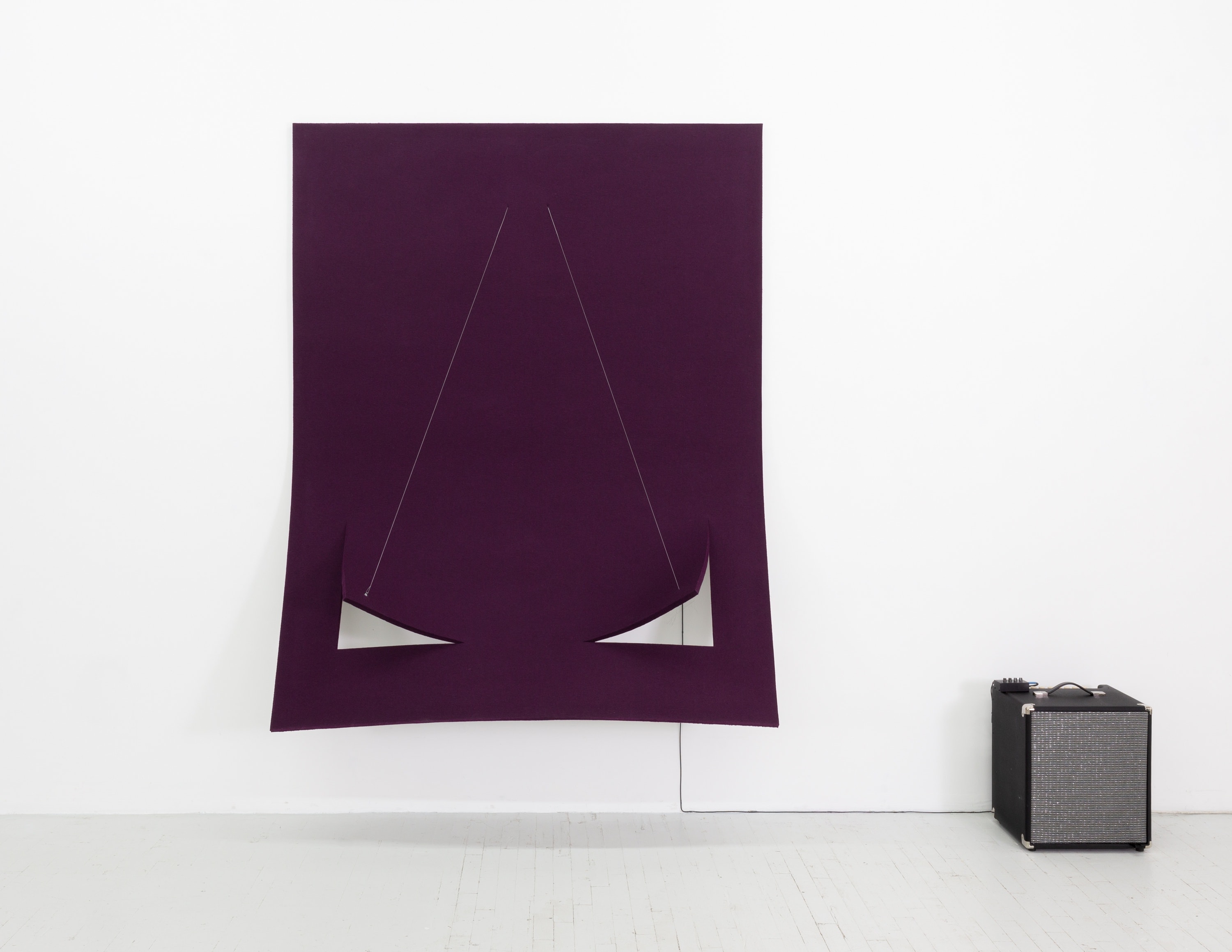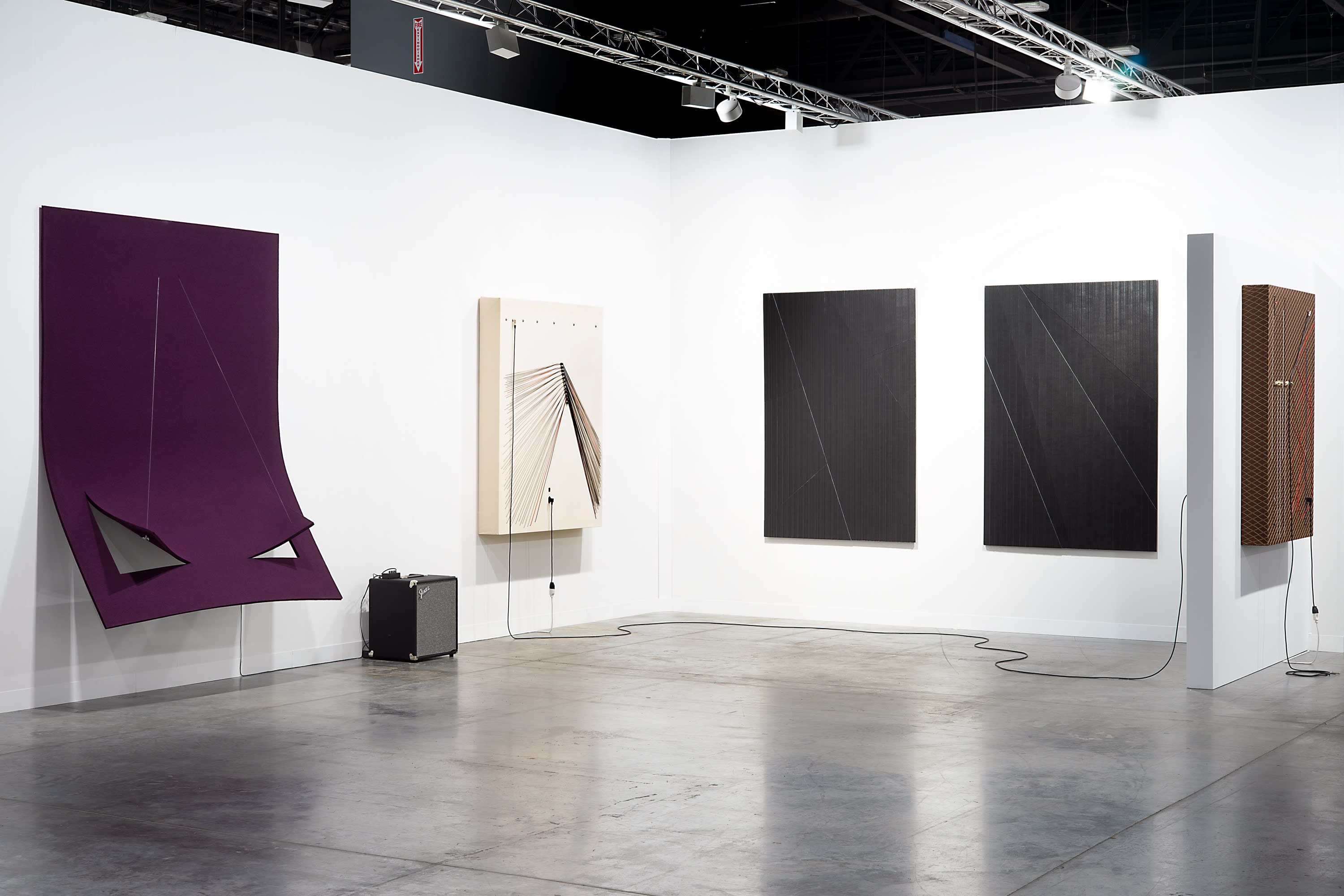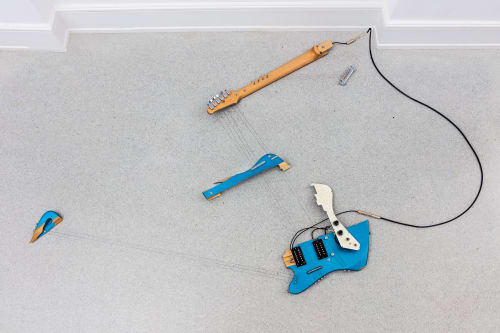
The Israeli-born, New York-based artist probes the limits of sound and space in her show at The Bass in Miami
Contrary to the long list of rock stars who have smashed up their guitars on stage in a fit of macho rage, the Israeli-born New York-based artist Naama Tsabar prefers to destroy hers in the privacy of her studio.
“It’s such a clichéd rock ’n’ roll act,” she says. “I like to take away from the action, its bravado and its legacy of violence. I put on goggles and some gloves and I bash it against the floor. Breaking a guitar is not easy. It takes a minute and a half — at least.”
In Tsabar’s case, there’s a greater purpose to the wanton destruction. She maps where the fragments of guitar have fallen and reinstalls them in exactly the same positions to create works of art, joining the broken pieces together with strings salvaged from working pianos and guitars. Audiences are invited to play the newly imagined instruments, which form part of her “Melody of Certain Damage” series.

Perimeters performance, 2021, The Bass museum, Miami Beach, FL. Composed in collaboration with Gabriela Burdsall, Ale Campos, Fielded, Lee Muze, Robbi Robsta, Gabrielle Sheerer, Sarah Strauss and Naama Tsabar. Courtesy of the artist and The Bass museum. Photo: Michael Del Riego.
Each of the 11 works on show invites the audience to activate them or navigate them in some way. In addition, Tsabar is collaborating with a group of female and non-binary musicians and dancers, most of them from Miami, to create a musical composition using her sculptures, which will be performed at various points throughout the exhibition and pressed as a vinyl recording to be sold with an exhibition catalogue.
The main focus of the show is a series of “Inversions”, a new body of work Tsabar first presented in early 2020, just before the pandemic hit. Accessed via a curved wall covered in strips of black gaffer tape (think Richard Serra meets Eddie Van Halen), Tsabar has installed several Inversions directly into the existing architecture of the museum. Each recess is painted in the same glossy deep red varnish of string instruments, while the edges of the holes are bound with the kind of maple purfling found on violins. One cavity contains a set of strings that can be reached by hand and strummed, another contains a motion sensor which transforms movement into sound. A third, larger, hole has a microphone built in that museum visitors can talk or sing into, becoming a sort of confessional box. “The space behind the wall becomes performative; you are really sculpting sonic landscapes through your movement behind these walls,” Tsabar says.
Movement becomes sculpture in another work — “October 13 2019-July 5 2021”, which consists of a pair of Cole Haan shoes Tsabar wore for almost two years. Instead of throwing them away, the artist inserted a metronome into their soles which keeps ticking at 60bpm, the rate of a healthy resting heart. “My body moved in this pair of shoes for so long and really sculpted them just by the mundane act of walking,” she says. “I always say this is the sculpture I worked on the most, ever. Two years is a long time to sculpt something.”

Naama Tsabar, Work on Felt (Variation 29) Purple, 2021. Carbon fiber, epoxy, wood, felt, microphone, guitar amplifier. 80 3/4 x 66 1/2 x 21 3/4 inches. Courtesy of the artist and Shulamit Nazarian, Los Angeles.
Monetising a practice largely rooted in performance and sound poses its own set of challenges. Nonetheless, Tsabar is represented by a committed cohort of galleries: Shulamit Nazarian in Los Angeles, Kasmin Gallery in New York, Tel Aviv’s Dvir Gallery, Spinello Projects in Miami and, most recently, Goodman Gallery, which has bases in Johannesburg, Cape Town and London.
Two are presenting her work at Art Basel in Miami Beach. Kasmin Gallery is showing one of Tsabar’s felt pieces from 2019 (“Work on Felt (Variation 21) Dark Blue”), which consists of a huge swatch of industrial felt that has been transformed into a modifiable stringed instrument. Influenced by Robert Morris’s felt works as well as Ellsworth Kelly’s flat planes of colour, the gallery’s senior director Mariska Nietzman says they “riff on hard-edged minimalism but they’re incredibly tactile”.
“They’re a good entry point for Naama’s work, especially after seeing the performances at The Bass, which are key to understanding how she conceives of the works as both sculpture and as performance.”

Installation view of Naama Tsabar at Art Basel: Miami Beach, Shulamit Nazarian, November 30 – December 4, 2021. Courtesy of the artist and Shulamit Nazarian, Los Angeles.
Shulamit Nazarian, meanwhile, is dedicating its entire booth to Tsabar — six works in total. The gallery’s senior director, Seth Curcio, notes that Tsabar has a dedicated and sophisticated group of collectors in the US. Curcio says that her work has been acquired by numerous museums over the past 24 months, including the Los Angeles County Museum of Art, the Seattle Art Museum, the Guggenheim Museum, the Perez Art Museum Miami and The Bass. Such acquisitions have been boosted in part by a renewed commitment by museums to diversify their audiences and collections. As Curcio puts it: “Conceptually, Naama is addressing a lot of issues that relate to gender equality and labour, which is a conversation many museums are interested in having right now as it relates to representation.”
Despite such evident success, Tsabar is clear-eyed about the barriers she still faces. In the 1990s, with the sounds of PJ Harvey, Björk, Tori Amos and Patti Smith echoing in her ears, she played in bands and performed in clubs. It feels as if there has been little progress since then. “As with any art form, the history of music was written by men, about men. Rock ’n’ roll, classical music and jazz are all very gendered and masculine — instruments are created for men, not for other bodies,” Tsabar notes. “It’s an overarching theme across the arts. There’s still a way to go.”
November 28–April 17 2022, thebass.org

